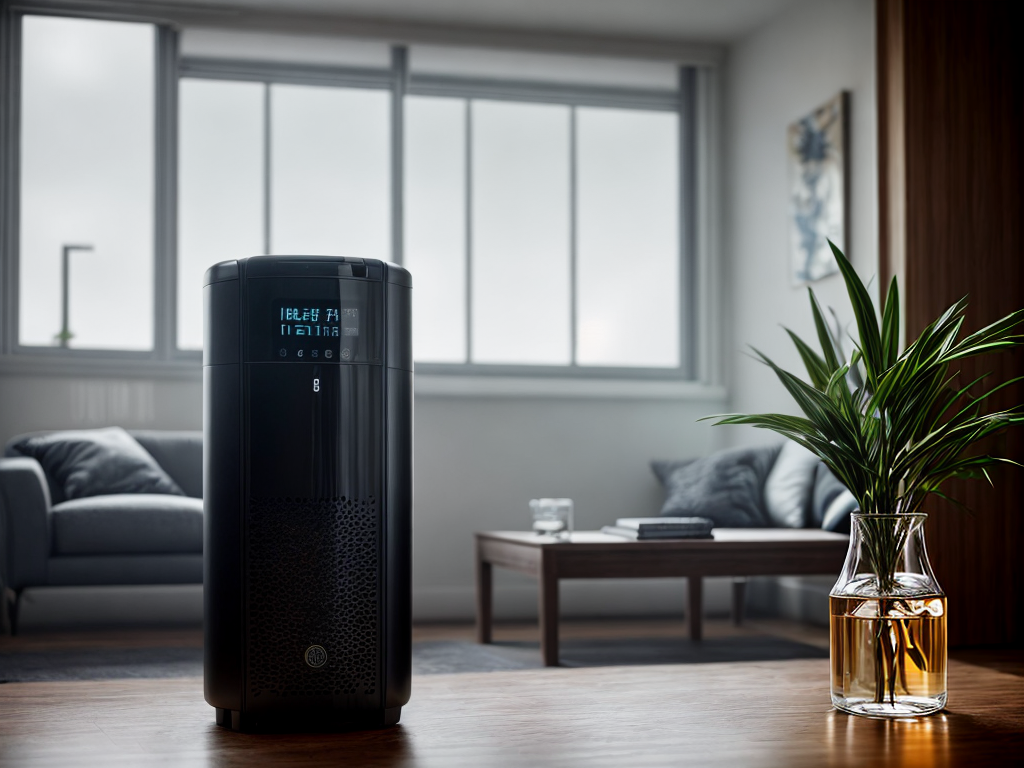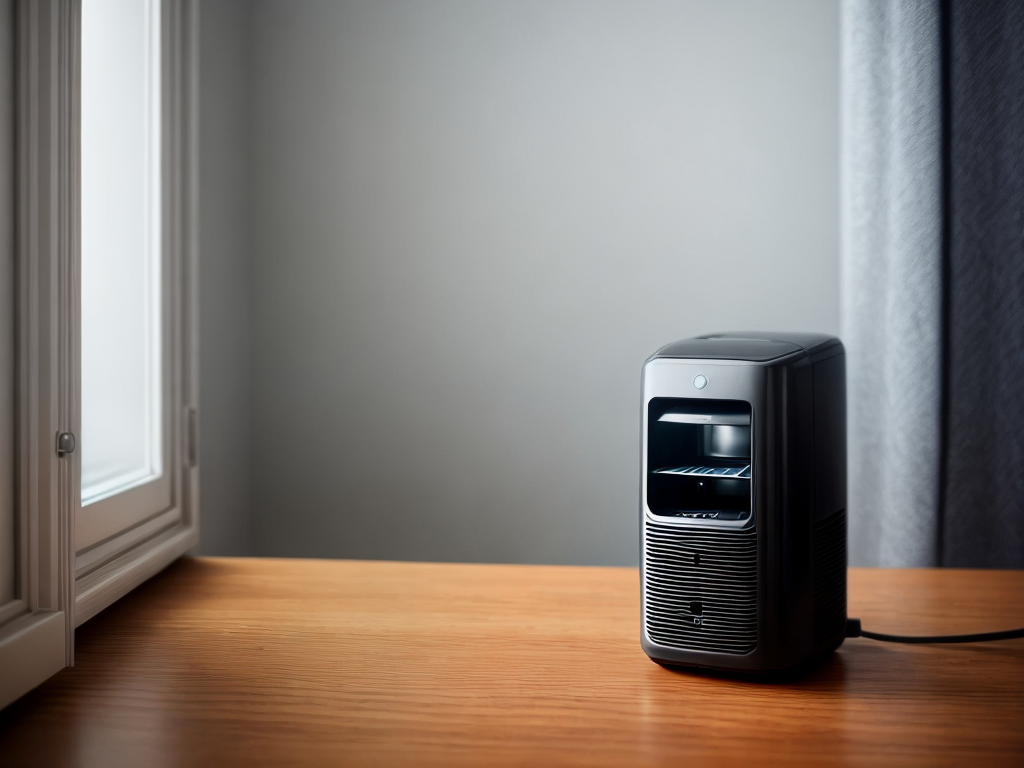
As I sit in my comfortably cool living room, I can’t help but marvel at the juxtaposition of technology and simplicity that lies behind my dehumidifier. It’s a device that quietly works its magic, creating a more comfortable environment without much fuss. But have you ever wondered how it actually accomplishes this feat? Well, buckle up, because we’re about to embark on a journey to uncover the inner workings of your dehumidifier and discover the fascinating tech that makes it all possible. So, let’s dive in and uncover the secrets that lie beneath the surface.
How Does a Dehumidifier Work?
A dehumidifier works by removing excess moisture from the air. It is a handy appliance that provides control over indoor humidity levels. To understand how a dehumidifier works, we need to delve into the techniques it uses for condensation control and humidity reduction.
The main component of a dehumidifier is the refrigeration system. This system consists of a compressor, a condenser, an evaporator, and a fan. The process starts with the fan drawing in humid air from the room. The air then passes through the refrigeration system. As the air enters the dehumidifier, it encounters the evaporator coils, which are cooled to a low temperature. The excess moisture in the air condenses on these coils and is collected in a water tank or drained out.
Once the moisture is removed, the dry air is reheated by the condenser coils and released back into the room. This cycle continues until the desired humidity level is achieved. Some dehumidifiers also come with additional features like automatic shut-off when the water tank is full or adjustable humidity settings for precise control.
The Role of Condensation in Dehumidifiers
Condensation plays a crucial role in the operation of dehumidifiers by removing excess moisture from the air. When the air is saturated with moisture, it needs to be cooled in order to condense the water vapor into liquid form. This is where the role of temperature control comes into play. By controlling the temperature inside the dehumidifier, it creates an environment where the air can reach its dew point and the moisture can condense.
To better understand the role of condensation in dehumidifiers, let’s take a look at the following table:
| Humidity Level | Impact on Health |
|---|---|
| High | Can lead to respiratory problems, allergies, and mold growth |
| Low | Can cause dry skin, respiratory irritation, and static electricity |
Maintaining the right humidity level is crucial for our health. High humidity levels can create a breeding ground for mold and allergens, leading to respiratory problems and allergies. On the other hand, low humidity levels can cause dry skin, respiratory irritation, and even static electricity.
Understanding the Importance of Air Filtration
Understanding the importance of air filtration is essential for maintaining clean and healthy indoor environments. When it comes to the air we breathe, ensuring its quality is crucial for our overall well-being. Here are four reasons why air purification and filtration systems are vital for our health:
- Eliminate harmful particles: Air filters are designed to trap and remove pollutants such as dust, pollen, pet dander, and mold spores. By doing so, they help reduce the risk of allergies, asthma, and respiratory issues.
- Improve indoor air quality: Poor indoor air quality can lead to various health problems, including headaches, fatigue, and irritation of the eyes, nose, and throat. Air filtration systems help remove contaminants, improving the overall air quality in your home or office.
- Reduce the spread of airborne diseases: Airborne diseases are easily transmitted through contaminated air. An effective air filtration system can help minimize the spread of viruses, bacteria, and other pathogens, creating a healthier environment for everyone.
- Enhance sleep quality: Breathing in clean air while you sleep can significantly improve the quality of your sleep. Air purification systems remove airborne irritants, allowing you to breathe easier and enjoy a more restful sleep.
Exploring the Different Types of Dehumidifier Technologies
When it comes to dehumidifier technologies, there are various methods used to extract moisture from the air. Some dehumidifiers use refrigeration to cool the air and condense the moisture, while others utilize desiccants to absorb the moisture. Additionally, there are energy-efficient options available that use advanced technologies to remove excess humidity without consuming excessive power.
Moisture Extraction Methods
To effectively extract moisture from the air, dehumidifiers utilize various types of technologies. These technologies are designed to efficiently remove excess moisture, creating a comfortable and controlled environment. Here are four common moisture extraction methods used in dehumidifiers:
- Refrigeration: This method uses a refrigerant to cool the air, causing the moisture to condense and collect in a water tank or drain.
- Desiccant: A desiccant dehumidifier uses a material like silica gel to absorb moisture from the air. The moisture is then collected or expelled.
- Thermoelectric: This technology uses an electric current to create a temperature difference, causing condensation of moisture, which can then be collected.
- Ionic Membrane: This advanced method uses a special membrane that attracts and separates moisture from the air, resulting in efficient moisture extraction.
Understanding the different moisture extraction methods can help you choose the right dehumidifier for your specific needs, ensuring optimal control over moisture levels in your environment.
Energy-Efficient Options
I have explored the different types of dehumidifier technologies to find the most energy-efficient options. For those who desire control over their indoor humidity levels, there are smart dehumidifiers and humidity control systems available in the market. These advanced technologies not only remove excess moisture from the air but also optimize energy consumption, making them a great choice for energy-conscious individuals.
To help you understand the energy efficiency of different dehumidifier options, here is a comparison table:
| Dehumidifier Type | Energy Efficiency |
|---|---|
| Smart Dehumidifiers | High |
| Humidity Control Systems | Very High |
Smart dehumidifiers utilize sensors and algorithms to monitor and adjust humidity levels automatically, reducing energy waste. On the other hand, humidity control systems integrate with your HVAC system, allowing for better energy optimization throughout your home. Both options offer efficient moisture control while minimizing energy consumption. Choose the one that best suits your needs and enjoy a comfortable and energy-efficient living space.
Key Components of a Dehumidifier
When it comes to understanding dehumidifiers, it is important to know about the key components that make them function effectively. The working mechanism of a dehumidifier involves various essential parts, each serving a specific function. By exploring and understanding the function of each component, we can gain a better understanding of how dehumidifiers remove excess moisture from the air.
Dehumidifier Working Mechanism
The key components of a dehumidifier work together to remove excess moisture from the air. Here’s how they do it:
- Compressor: This component compresses the refrigerant, which causes it to release heat and condense into a liquid. This process helps to lower the humidity level in the air.
- Condenser coil: The condenser coil cools down the compressed refrigerant, causing it to release more heat and turn into a high-pressure gas.
- Evaporator coil: As the high-pressure gas flows through the evaporator coil, it expands and cools down, absorbing heat and moisture from the air.
- Fan: The fan circulates the air over the evaporator coil, allowing the moisture to condense and collect in a reservoir while the dry air is released back into the room.
With these key components, a dehumidifier provides effective moisture removal and humidity control, giving you the power to create a comfortable and healthy indoor environment.
Essential Dehumidifier Parts
Now let’s explore the essential parts that make up a dehumidifier, enabling it to effectively remove moisture and control humidity in indoor environments. Understanding these key components is crucial for dehumidifier maintenance and troubleshooting dehumidifier issues. The first vital part is the compressor, responsible for compressing the refrigerant and increasing its temperature. This hot refrigerant then passes through the condenser coil, where it releases its heat and condenses into a liquid. The liquid refrigerant then flows into the evaporator coil, where it evaporates and absorbs moisture from the air. The moisture-laden air passes through the air filter, which traps dust and debris. Finally, the dry air is released back into the room. By knowing these essential dehumidifier parts, you can better understand how to maintain and troubleshoot your dehumidifier for optimal performance.
Function of Each Component
To understand how a dehumidifier effectively removes moisture and controls humidity, it is important to explore the function of each key component.
- Compressor: The compressor plays a vital role in the dehumidification process. It compresses the refrigerant, raising its temperature and pressure.
- Condenser: As the hot refrigerant flows into the condenser, it releases heat and condenses into a liquid. This process helps to remove moisture from the air.
- Evaporator: The evaporator coil absorbs heat from the air, causing the refrigerant to evaporate and turn into a gas. This gas then moves to the compressor for the cycle to continue.
- Fan: The fan is responsible for air circulation within the dehumidifier. It draws in humid air, passes it over the evaporator coil to remove moisture, and then blows out the dry air.
Understanding the function of each component allows for better control over humidity levels and ensures efficient moisture removal.
Tips for Maintaining and Maximizing Your Dehumidifier’s Efficiency
Regular maintenance and proper usage can significantly enhance the efficiency of your dehumidifier. Taking good care of your device not only ensures optimal performance but also increases its lifespan. Here are some tips to help you maintain and maximize the efficiency of your dehumidifier.
Firstly, it is important to clean the air filter regularly. Dust and debris can accumulate on the filter, hindering the airflow and reducing the unit’s efficiency. By cleaning or replacing the filter every few months, you can ensure that your dehumidifier is operating at its best.
Secondly, keep an eye on the water collection tank. Empty it regularly to prevent overflow and potential damage to the unit. Additionally, clean the tank with mild soap and water to prevent the growth of mold or bacteria.
Furthermore, make sure to place your dehumidifier in the right location. Keep it away from walls or furniture to allow proper air circulation. Also, avoid placing it in areas with high humidity, such as near a bathroom or laundry room.
Lastly, monitor the humidity levels in your home. Set your dehumidifier to a suitable level based on the manufacturer’s recommendations. Regularly check the humidity levels and adjust the settings accordingly to maintain an optimal environment.







